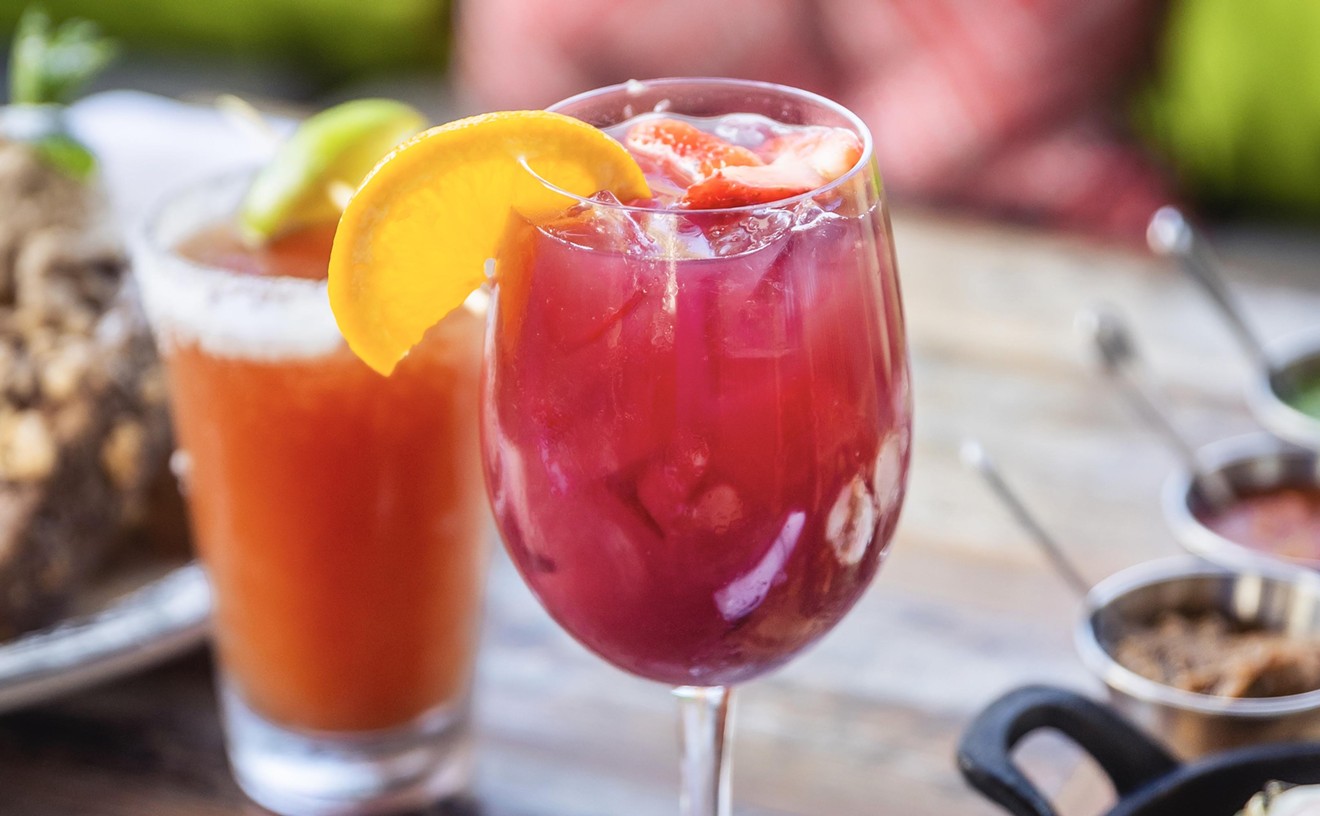The sound of hot oil sizzling and popping can curl anyone's lips to smile. But to what end should that oil be used? Should it turn thinly sliced potatoes to French fries? What about crisping thin rounds of sweet potato that, when partnered with crunchy pork belly and piquant salsa criolla, form Peru's beloved butifarra sandwich? Lo siento, mis amigos.
Enjoying life the way it was meant to be savored means nothing other than starchy pale-yellow slugs of green plantain destined to become crackly golden tostones should bathe in that searing oil.
For those who didn't grow up with these twice-fried plantain disks, even those who did and don't appreciate them, their beauty must be explained. See, when you're a Caucasian kid growing up somewhere in America that doesn't offer Miami's stunning diversity, the crunch that accompanies many meals comes courtesy of the French fry. Undoubtedly, French fries are delicious — at least the crisp, skin-on ones, made by hand rather than machine. But the vast majority of them are mushy spears of disappointment, lacking the crackly shell that guards a fluffy, moist interior.
Enter the toston. On a plate, they serve the same function as French fries. They add grease and crunch. But unlike fries, good tostones are stupidly easy to make and, unlike fries, are barely seen in mass-produced form. There are few eating experiences that can match a plate of grilled snapper surrounded by moros and freshly fried tostones.
The first time I turned out a batch at home was a come-to-God moment. "No way!" I exclaimed while straining the golden disks out of the oil. "I have made Julia Child's pâté de canard en croûte. I have folded up horribly misshapen but nevertheless delicious xiao long bao." Two years ago, I purged my wine fridge and used it to make soppressata and duck prosciutto. None of those exploits were as rewarding as setting a mound of steaming tostones on a plate, dusting them with Maldon salt, and setting them out before a group of friends.
See, with tostones, you and I have the power. We have the power to make delicious little grease bombs all on our own with minimal effort. Sure, you could make French fries or tater tots at home. But be honest: Most of the time, they come from a bag procured from your grocer's freezer aisle. Otherwise prepared to dedicate a vast portion of your day to the undertaking, you discover that tostones require maybe 30 minutes, depending upon how many, to make.
Being in Miami means green plantains can be found at almost any market. Remember they have to be green. The black-spotted yellow variety are mushy, sweet, and used to make maduros.
When you get your little treasures home, you might find they don't peel like regular bananas. The skins are almost leathery and seem glued to the fruit. Instead, slice the plantain with the skin into slugs as thick as the first joint of your thumb. With this accomplished, it's easy to slip a knife between the skin and fruit, cut it, and peel it away with ease.
Next use peanut oil to fry the slugs. I don't know what canon dictates on this issue, but I've tried many oils, including canola, vegetable, safflower, and rapeseed. Peanut has the nuttiest of them all, which is a gorgeous enhancer for the unripened plantain's own nutty flavor. Peanut oil may not be the best for your already gummed-up arteries, but give your cardiologist some tostones. He or she will understand and dutifully bump the date of that triple bypass surgery you've been putting off.
When all the slugs are fried (you'll know they're done with their first oil bath when you see the edges just beginning to brown), it's time to press them into that familiar disk form. Don't buy that tostonera from Publix. A greased bit of plastic wrap and the bottom of a glass bowl or metal pot work just fine. Press them to your preferred thickness. We're not militant over here. If you want them thinner, they'll crisp up faster and more thoroughly. Thicker ones will take longer to cook but also maintain a more delicate, moister interior. The choice is yours. Sprinkle them with salt as they cool, and the magic is done.
The only challenge is finding the willpower not to fry up a plate every day.
For more, follow Zach on Twitter or Instagram.
[
{
"name": "Air - MediumRectangle - Inline Content - Mobile Display Size",
"component": "19274298",
"insertPoint": "2",
"requiredCountToDisplay": "2"
},{
"name": "Editor Picks",
"component": "17482312",
"insertPoint": "4",
"requiredCountToDisplay": "1"
},{
"name": "Inline Links",
"component": "18711090",
"insertPoint": "8th",
"startingPoint": 8,
"requiredCountToDisplay": "7",
"maxInsertions": 25
},{
"name": "Air - MediumRectangle - Combo - Inline Content",
"component": "17482310",
"insertPoint": "8th",
"startingPoint": 8,
"requiredCountToDisplay": "7",
"maxInsertions": 25
},{
"name": "Inline Links",
"component": "18711090",
"insertPoint": "8th",
"startingPoint": 12,
"requiredCountToDisplay": "11",
"maxInsertions": 25
},{
"name": "Air - Leaderboard Tower - Combo - Inline Content",
"component": "17482313",
"insertPoint": "8th",
"startingPoint": 12,
"requiredCountToDisplay": "11",
"maxInsertions": 25
}
]










